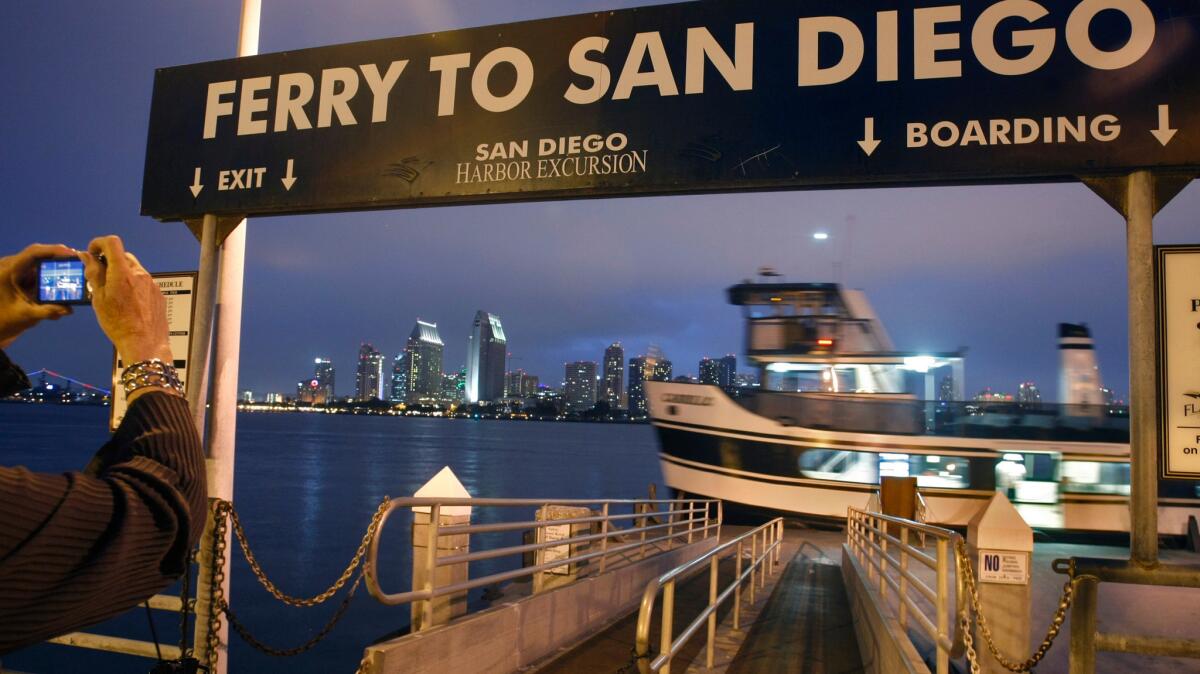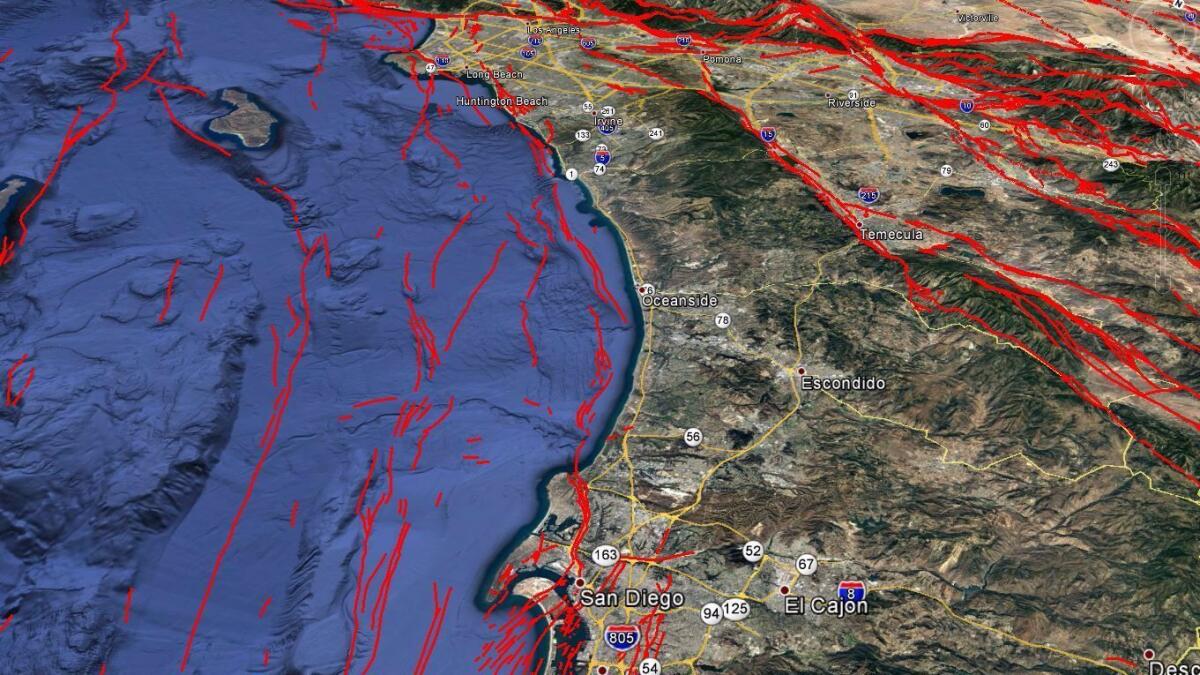San Diego faces heightened risk of major earthquakes, studies say

- Share via
New research released this week found that a fault under the heart of San Diego can produce stronger and more frequent earthquakes than previously thought.
It’s the second study in recent months pointing to heightened quake risks in the San Diego area.
Here is a breakdown:

ROSE CANYON FAULT
More, stronger quakes than previously believed
San Diego’s Rose Canyon fault produces powerful earthquakes more frequently than once believed, according to researchers from San Diego State University.
SDSU scientists who studied the fault in
Seismologist Tom Rockwell said that earlier work indicated that such quakes occur every 1,000 to 1,500 years on the 40-mile-long fault, which extends from San Diego Bay, through Old Town and across
The fault is known to extend as far north as Oceanside offshore.
“A powerful quake in the mid-to-upper 6s could cause liquefaction around San Diego and Mission bays and locally in Mission Valley, and cause the land to be offset across the fault, which would damage buildings,” said Rockwell, one of California’s most experienced seismologists.
The research team said they also found evidence at a dig site in Old Town that the strike-slip fault has produced at least two additional quakes in the magnitude 5.0 to 6.0 range in recent centuries— shaking referred to as background seismicity.
Read more about the research here.

WHY L.A. SHOULD WORRY ABOUT SAN DIEGO’S ROSE CANYON FAULT
The prospect of a simultaneous earthquake from L.A. to San Diego
In March, scientists proved how San Diego’s Rose Canyon should give residents of Los Angeles and Orange counties something to worry about.
Researchers said the discovery of missing links between earthquake faults shows how a magnitude 7.4 temblor could rupture virtually simultaneously underneath Los Angeles, Orange and San Diego counties.
Such an earthquake would be 30 times more powerful than the magnitude 6.4 Long Beach quake in 1933, which killed 120 people.
But to get to a 7.4, the earthquake would not only have to again rupture the Newport-Inglewood fault in Los Angeles and Orange counties. It would also have to jolt the Rose Canyon fault system, which runs all the way through downtown San Diego and hasn’t ruptured since roughly 1650.
“These two fault zones are actually one continuous fault zone,” Valerie Sahakian, the study’s lead author, said earlier this year. Sahakian wrote the study while working on her doctorate at Scripps Institution of Oceanography at UC San Diego. Sahakian is now a research geophysicist with the U.S. Geological Survey.
In the past, scientists reported gaps between the two fault systems of as much as 3 miles. But this study showed the gaps are actually less than 1¼ miles apart.
“That kind of characterizes it as one continuous fault zone, as opposed to two different, distinct fault systems,” Sahakian said, making it far easier for an earthquake to keep shaking land as it races down a longer fault, widening the seismic reach of the temblor.
There had already been consensus among scientists over the last three decades that the fault systems were actually one, said Caltech seismologist Egill Hauksson, who was not involved with this study. “We now have real evidence that this is the case,” Hauksson said.
The difficulty in proving it was caused by the location of the gap — under the Pacific Ocean between Newport Beach and La Jolla. Drawing a better map meant trying to figure out where the fault was underwater.
Read more about that research here.

Sign up for Essential California
The most important California stories and recommendations in your inbox every morning.
You may occasionally receive promotional content from the Los Angeles Times.








